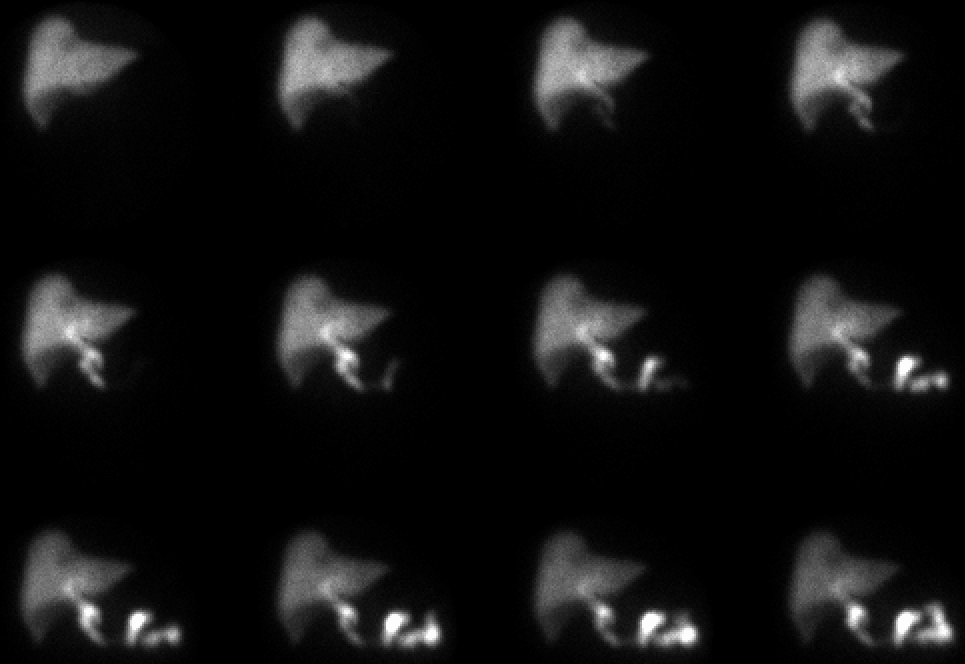Case Author(s): Samuel Wang, M.D. and Jerold Wallis, M.D. , . Rating: #D2, #Q3
Diagnosis: Acute acalculous cholecystitis
Brief history:
65-year old man status post
aortic valve replacement and cecal perforation, now
with fevers and abdominal pain.
Images:

Anterior static images over 60 minutes.
View main image(hs) in a separate image viewer
View second image(hs).
Anterior static images over 30 minutes post morphine.
View third image(ct).
CT gallbladder.
Full history/Diagnosis is available below
Diagnosis: Acute acalculous cholecystitis
Full history:
This 65-year old man is three
weeks status post aortic valve replacement
complicated by subsequent cecal perforation. The
patient has been receiving total parenteral nutrition
and now has fevers and abdominal pain. CT and
ultrasonography demonstrated a distended
gallbladder with sludge ,but no evidence of
gallstones.
Radiopharmaceutical:
Tc-99m mebrofenin
Findings:
Sincalide (0.02 ug/kg) was
administered intravenously 30 minutes prior to
radiopharmaceutical injection to promote initial
emptying of the gallbladder. Static images obtained
over the first hour post injection demonstrated good
hepatic uptake with prompt excretion into the
common bile duct and small bowel. There was no
visualization of the gallbladder at 1 hour.
Subsequently, 3 mg of morphine i.v. was
administered. Additional imaging for 30 minutes
again demonstrated nonvisualization of the
gallbladder. These findings are most consistent
with acute cholecystitis.
Discussion:
Sincalide is the synthetic C
terminal octapeptide of CCK. Its use in this case
was to promote initial gallbladder emptying in this
patient with a distended gallbladder who had been
on prolonged fasting with parenteral nutrition.
Morphine augmentation was performed in this case
to contract the sphincter of Oddi and thus promote
biliary flow into the cystic duct instead of the
common bile duct. Acalculous cholecystitis
accounts for approximately 5-15% of all acute
cholecystitis cases. It is seen most commonly in
severely ill hospitalized patients with trauma, severe
burns, sepsis, or recent surgery. The etiology is
thought to be related to gallbladder ischemia or
cystic duct obstruction by inflammatory edema,
inspissated bile, or inflammatory debris.
ACR Codes and Keywords:
References and General Discussion of Hepatobiliary Scintigraphy (Anatomic field:Gasterointestinal System, Category:Inflammation,Infection)
Search for similar cases.
Edit this case
Add comments about this case
Read comments about this case
Return to the Teaching File home page.
Case number: hs007
Copyright by Wash U MO

